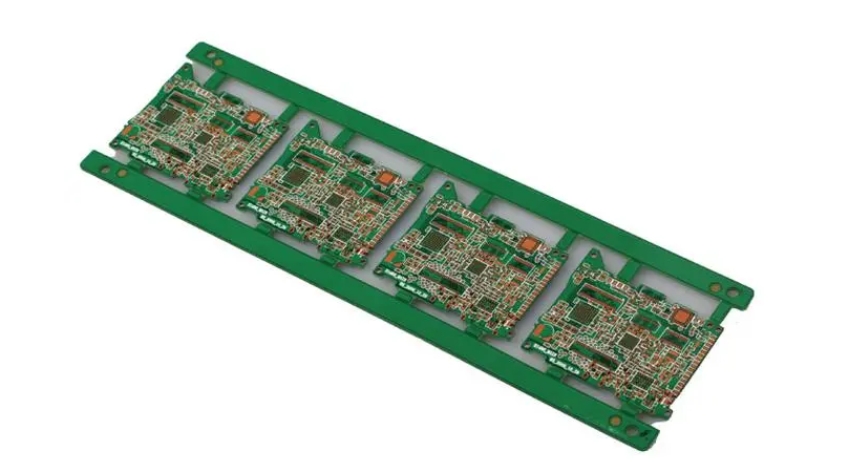A ground plane slot is a recess in the ground layer (ground plane) of a PCB board,usually to accommodate some signal lines or to provide an alternative return path necessary for multilayer boards. The shape, size and location of the slot will directly affect the performance of the circuit.
Analysis of the impact of ground plane slotting on the EMC characteristics of PCB boards
Ground plane slotting design can have a significant impact on the electromagnetic compatibility (EMC) performance of a PCB board, which can be both detrimental and beneficial. In order to understand this in depth, we first need to clarify the current distribution characteristics of high-speed signals and low-speed signals on the PCB board.In the case of low-speed transmission, the current flows mainly along the path of least resistance.As shown in the figure below,when the low-speed current flows from point A to point B, its return signal will be widely distributed on the ground plane and return to the source.At this point,the current is relatively broadly distributed.
However,in the case of high-speed transmission, the inductive effect on the signal return path will overtake the resistive effect as the dominant factor.The high-speed return signal will flow along the path of least impedance, forming a narrow and concentrated bundle that closely follows the signal line below.
When incompatible circuits are present on the PCB board,a ‘split-ground’ strategy is required to avoid the superposition of return signals and common ground impedance coupling. This means separate ground planes for supply voltage, digital and analogue signals,high and low speed signals, and high and low current signals.From the previous description of the return current distribution of high-speed and low-speed signals, we can easily understand the importance of the split-ground strategy.
However,both high-speed and low-speed signals can cause a number of serious problems when they cross open slots in the power plane or ground plane.These problems include:
Ground plane slots increase the current loop area, which increases loop inductance and results in output waveforms that are prone to oscillations.
For high-speed signal lines that require tight impedance control and are routed according to a stripline model, slotting destroys the stripline model, resulting in impedance discontinuities that can cause serious signal integrity problems.
Ground plane slotting increases the potential for radiated emissions into surrounding space and makes the board more susceptible to interference from space magnetic fields.
High-frequency voltage drops across loop inductors can constitute a source of common-mode radiation and generate common-mode radiated interference through external cables.
Ground plane slotting also increases the risk of high frequency signal crosstalk between other circuits on the board.

The following principles should be adhered to when dealing with ground plane slotting:
For high-speed signal lines that require tight impedance management, their paths must strictly avoid routing across split regions to prevent impedance discontinuities, which in turn can lead to serious signal integrity challenges;
When incompatible circuits exist on the PCB board,ground-sharing measures should be taken,but in doing so,it should be ensured that high-speed signal lines are not forced to be routed across the split region, while low-speed signal lines across the split should also be minimised;
If it is indeed impossible to avoid alignment across the split slot, a bridging programme should be adopted for proper handling;
External connections to the connector should be avoided in the stratum separation,because if there is a significant difference in potential between point A and point B on the stratum,it may cause common mode radiation problems through the external cable;
In the PCB design of high-density connectors,unless there is a specific need,generally should ensure that the ground network around each pin layout,or in the pin arrangement evenly distributed ground network to ensure the continuity of the ground plane,thus effectively preventing the emergence of slotting.
Ground plane slotting has a profound impact on the EMC performance of the PCB board and requires careful design. Following the principles of avoiding high-speed lines across the slot, reasonable ground distribution, bridging when necessary, and optimising the layout of connectors can effectively improve EMC performance and ensure product stability and reliability.